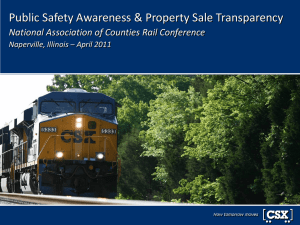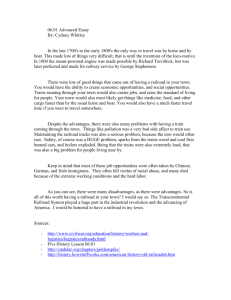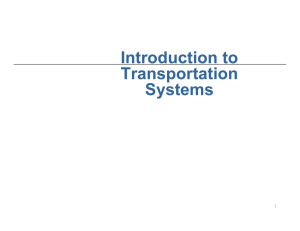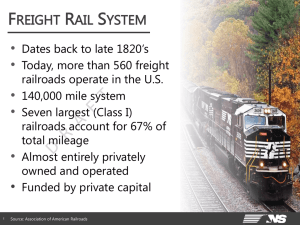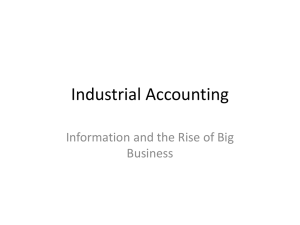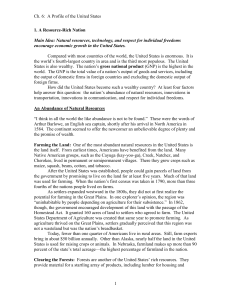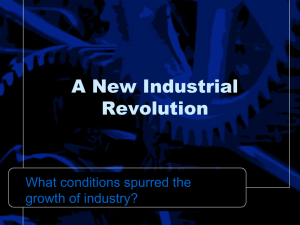The Trunk Lines as Big Business (PowerPoint)
advertisement
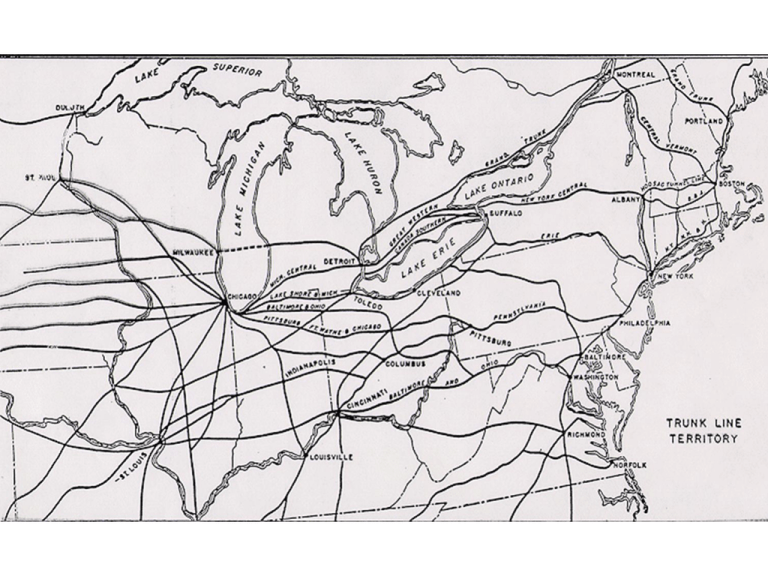
The Trunk Lines as Big Business 1. By the early to mid 1850s the great Trunk Line Railroads – the New York Central, the Pennsylvania, the B&O, and the Erie – were big businesses with recognizably “modern” management structures. 2. By 1856 telegraph control of railroad operations became widespread. 3. The trunk lines were literally forced to pioneer what became new ways of corporate management due to the complex administrative problems they faced. 4. In 1855 it cost about $2M to run the Pennsylvania railroad. The largest comparable non-railroad businesses were New England textile mill complexes which cost about $.3M to run. 5. The trunk line railroads were spread over a vast territory. Shops, terminals, stations, warehouses, office buildings, telegraph lines, bridges, roadbeds, all had to be administered and maintained. 6. Coordination was complex. Every day stations loaded different amounts of freight and every day there was a variety of traffic that had to be dealt with. Cargoes were unpredictable – it could come from anywhere and go anywhere. They were a “nickel and dime” business that had to manage a river of coin. 7. Consequently, short run decisions had to be made daily (accepting and directing large quantities of freight daily); and long run decisions had to be made about what level to set freight rates. 8. With such complexities, complex organizational structures evolved to handle them. 9. The Trunk Line Railroads made important contributions to the science of modern management. Between them they fashioned the earliest large-scale administrative structure in American business. The Importance of the Pennsylvania Railroad 1. Basic Problem for all Railroads: a. Prices Must be based on Actual Costs b. Use the Least Amount of Equipment Possible c. Cars Must be Fully Loaded d. Each Train Should have as Many Cars as the Engine can Handle 2. The Key to Profitability: First, Know the Costs. Second, given the Costs, Speed the Flow and Increase the Volume of Traffic 3. By 1865 the Pennsylvania Railroad was the Largest Private Business in the World in terms of Revenue, Employees, and the value of its Physical Assets. 4. The Pennsylvania was a Mountain Railroad which made its Achievements all the More Impressive: a. Required More Trains b. Short and Frequent Trains Required More Track Space (Engines, Cabooses, Sidings, Yards) c. High Operating Costs -- Fuel, Men, Maintenance, Track, Snow Management Innovations of the PA RR 1. Highly Detailed Cost Accounting System 2. Information Flowed upward through the organization using the telegraph 3. (1) and (2) resulted in Control Through Statistics. First, Know the Costs. Second, Speed the Flow and Increase the Volume. 4. Line and Staff form of organization – Line Officers ran the day-to-day operations of the Railroad; Staff Officers did the Planning.

